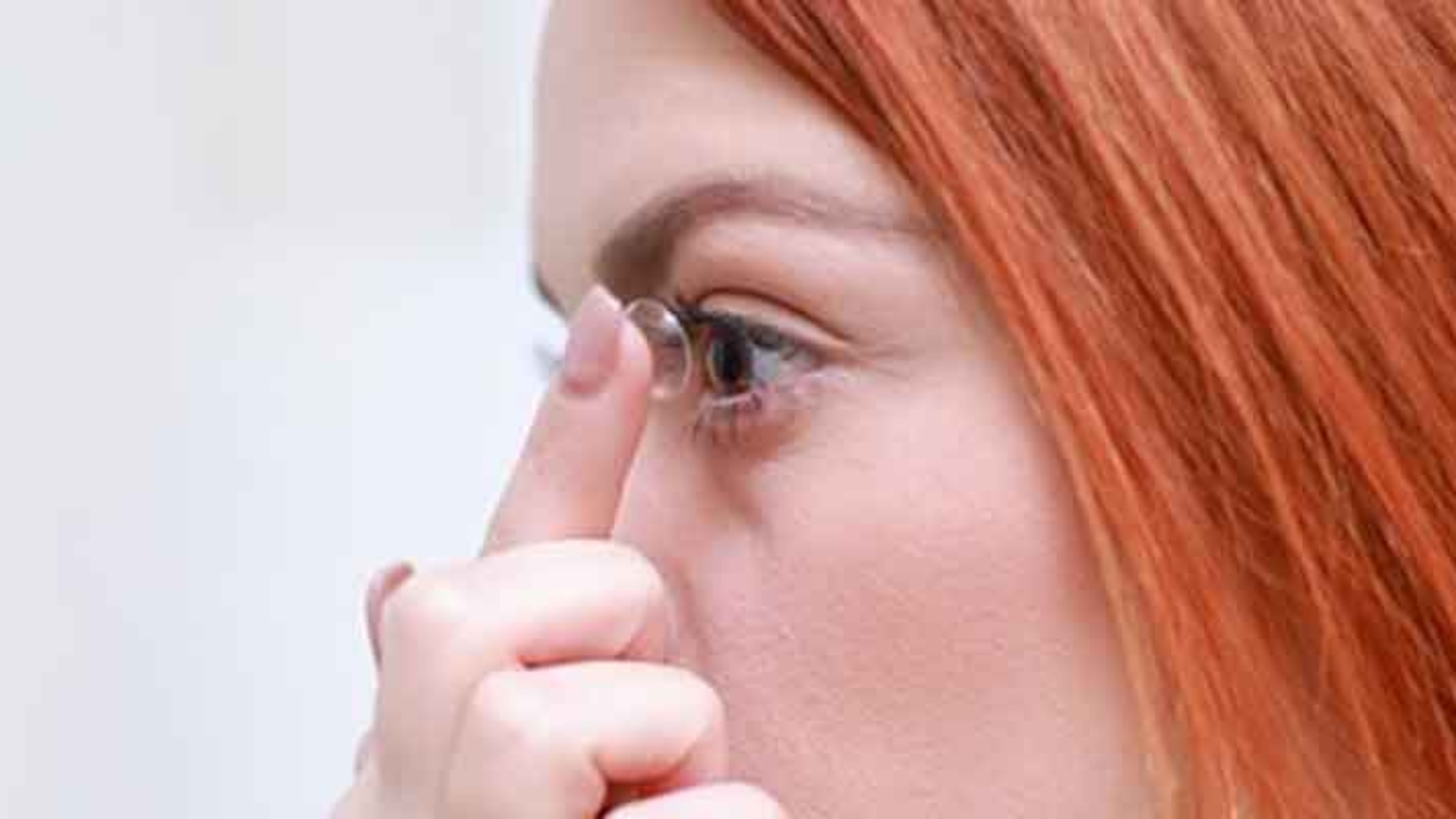Contact lenses offer a convenient and effective alternative to glasses for vision correction. This comprehensive guide covers everything from the types of contact lenses available to their proper care and potential risks.
By Jom Johnson and Javad Zarbakhsh, Cademix Institute of Technology
contact lens, vision correction, contact lens types, contact lens care, contact lens safety, contact lens benefits, eye health, ophthalmologist, optometrist, contact lens solutions

An Overview of Contact Lenses
The Evolution of Contact Lenses
Contact lenses have come a long way since their inception. The concept of contact lenses dates back to the 16th century when Leonardo da Vinci sketched ideas for altering corneal power. However, it wasn’t until the late 19th century that practical contact lenses were developed. Modern contact lenses are made from advanced materials that provide better comfort and vision correction.
Why Choose Contact Lenses?
Contact lenses offer several advantages over traditional glasses. They provide a wider field of vision, do not fog up or get splattered by rain, and are ideal for sports and physical activities. Additionally, they allow for more natural vision correction as they move with your eyes, providing consistent vision correction in all directions.
Types of Contact Lenses
Soft Contact Lenses
Soft contact lenses are made from flexible, water-absorbing materials called hydrogels. They are comfortable to wear and are available in various types to suit different needs.

Daily Disposable Lenses
Daily disposable lenses are designed for single-day use. They are convenient and hygienic as you use a fresh pair every day, reducing the risk of eye infections.
Bi-weekly and Monthly Disposable Lenses
These lenses are designed to be worn daily and replaced every two weeks or once a month, respectively. They require proper cleaning and storage after each use.
Extended Wear Lenses
Extended wear lenses can be worn continuously for up to 30 days, even while sleeping. They are made from highly breathable materials that allow oxygen to pass through to the cornea, reducing the risk of complications.
Rigid Gas Permeable (RGP) Lenses
RGP lenses are made from durable materials that allow oxygen to pass through to the eye. They provide sharp vision and are particularly effective for correcting astigmatism and other complex refractive errors. Although they may take some time to get used to, they offer long-lasting vision correction and are more resistant to deposits.
Toric Contact Lenses
Toric lenses are designed to correct astigmatism, a condition where the cornea is irregularly shaped. These lenses have different powers in different meridians of the lens to correct the asymmetry in the eye’s curvature.
Multifocal and Bifocal Contact Lenses
Multifocal and bifocal lenses are designed for people with presbyopia, a condition that affects near vision as we age. These lenses have multiple zones of power to allow for clear vision at different distances.
Colored Contact Lenses
Colored contact lenses can enhance or change the color of your eyes. They are available in both prescription and non-prescription forms and come in various shades to suit your preference.
Scleral Contact Lenses
Scleral lenses are large-diameter RGP lenses that rest on the sclera (the white part of the eye) and create a tear-filled vault over the cornea. They are used to treat severe dry eyes, keratoconus, and other corneal irregularities.

Benefits of Contact Lenses
Enhanced Visual Acuity
Contact lenses provide better visual acuity compared to glasses because they conform to the curvature of your eye, resulting in a wider field of view and less distortion.
Improved Aesthetics
Many people prefer contact lenses for cosmetic reasons. They offer a more natural appearance and can be used to change or enhance your eye color.
Convenience for Active Lifestyles
Contact lenses are ideal for sports and physical activities as they do not get in the way or fall off like glasses. They also do not fog up or get affected by weather conditions.
Freedom from Frames
Contact lenses eliminate the need for bulky frames, providing a more comfortable and natural visual experience. This is particularly beneficial for those who find glasses cumbersome or uncomfortable.
How to Get Fitted for Contact Lenses
Choosing the Right Eye Care Professional
To get fitted for contact lenses, you should visit an eye care professional, such as an optometrist or ophthalmologist. They will conduct a comprehensive eye exam and determine the best type of contact lenses for your needs.
Comprehensive Eye Exam
During the eye exam, the eye care professional will measure your visual acuity, check for refractive errors, and assess the overall health of your eyes. They will also measure the curvature of your cornea and the size of your pupil and iris to ensure a proper fit.
Contact Lens Trial
You may be given trial lenses to wear for a short period to ensure they fit comfortably and provide clear vision. The eye care professional will check the fit and make any necessary adjustments before prescribing your lenses.
Proper Contact Lens Care
Cleaning and Disinfecting
Proper cleaning and disinfecting of contact lenses are crucial to prevent eye infections and maintain eye health. Always use the recommended contact lens solution and follow the manufacturer’s instructions for cleaning and storing your lenses.
Avoiding Water Contact
Do not expose your contact lenses to water, including tap water, swimming pools, or hot tubs, as it can introduce harmful microorganisms that can cause eye infections.
Replacing Lenses on Schedule
Follow the recommended replacement schedule for your contact lenses. Wearing lenses beyond their intended lifespan can lead to discomfort and increase the risk of eye infections.
Regular Eye Check-ups
Schedule regular check-ups with your eye care professional to monitor your eye health and ensure your contact lenses are still fitting properly and meeting your vision needs.

Potential Risks and Complications
Eye Infections
Improper use and care of contact lenses can lead to eye infections, such as microbial keratitis. Symptoms include redness, pain, blurred vision, and discharge. If you experience any of these symptoms, remove your lenses and contact your eye care professional immediately.
Dry Eyes
Contact lenses can cause or exacerbate dry eye symptoms in some people. Using lubricating eye drops and choosing lenses with high oxygen permeability can help alleviate dryness.
Corneal Abrasions
A poorly fitting lens or improper handling can cause corneal abrasions, which are scratches on the surface of the eye. This can lead to pain, sensitivity to light, and an increased risk of infection.
Allergic Reactions
Some people may develop allergic reactions to contact lens solutions or the lenses themselves. Symptoms include itching, redness, and swelling. Switching to a different type of solution or lens material may help alleviate these symptoms.
Innovations in Contact Lens Technology
Silicone Hydrogel Lenses
Silicone hydrogel lenses are a significant advancement in contact lens technology. They allow more oxygen to pass through to the cornea, reducing the risk of complications and providing greater comfort for extended wear.
Daily Disposable Lenses
Daily disposable lenses offer the ultimate convenience and hygiene. With no need for cleaning and storage, they are ideal for people with busy lifestyles or those prone to allergies.
Smart Contact Lenses
Research is ongoing in the development of smart contact lenses that can monitor health conditions such as glucose levels in people with diabetes or provide augmented reality displays. These lenses have the potential to revolutionize eye care and offer new functionalities.
Multifocal Lenses with Enhanced Designs
Modern multifocal lenses have improved designs that provide better vision at all distances. These lenses use advanced optics to create multiple focal points, allowing for clear vision without the need for reading glasses.

Special Considerations for Contact Lens Wearers
Contact Lenses for Astigmatism
Toric lenses are specifically designed to correct astigmatism. They have different powers in different meridians of the lens to compensate for the irregular shape of the cornea.
Contact Lenses for Presbyopia
Presbyopia is a condition that affects near vision as we age. Multifocal and bifocal contact lenses provide a solution by incorporating multiple zones of power to allow for clear vision at various distances.
Pediatric Contact Lenses
Children and teenagers can also benefit from contact lenses. They may be prescribed for vision correction or to slow the progression of myopia (nearsightedness). It is essential for parents to ensure proper handling and care to prevent complications.
Contact Lenses for Special Conditions
Specialty contact lenses, such as scleral lenses and hybrid lenses, are available for people with conditions like keratoconus, severe dry eyes, and corneal irregularities. These lenses provide customized solutions to meet unique vision needs.
Conclusion
Contact lenses offer a versatile and effective solution for vision correction, providing numerous benefits over traditional glasses. From daily disposables to specialized lenses for complex conditions, there is a wide range of options to suit individual needs. Proper care and regular check-ups are essential to ensure the health and safety of your eyes while wearing contact lenses. For expert guidance on choosing the right contact lenses and maintaining optimal eye health, visit our clinic and explore our Acceleration Program, which includes CV reviews and specialized further education. Contact us today to schedule your appointment and take proactive steps towards preserving your vision.
Explore our Acceleration Program and consultancy services: Cademix Institute of Technology
For more information on contact lenses: American Optometric Association
Discover advanced contact lens options at: Eye Clinic Vienna

